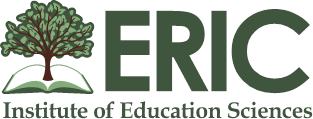The Rhetorical Value of Multimodal Composition
Keywords:
multimodal interaction, rhetoric, social signals, translanguaging, sociolinguistics, verbal and non-verbal communicationAbstract
This article critically reflects on the recent scholarship of an IRB-approved qualitative study of a diverse group of first-year English composition students who participated in the development of a multimodal capstone composition. This investigation examines the rhetorical value of composing practices in a multiliteracies framework to address the relationship between linguistic diversity and social signals in a context where communication is complex. Further, the study examined whether the inclusion of visual and technological literacy practices in an online setting enhanced verbal and nonverbal communication; multiparty interaction, writing engagement, and audience awareness. This research was conducted with first-year composition students enrolled in both synchronous and asynchronous online instruction during the Fall 2021 semester at an urban community college in Brooklyn, New York. Data collection included conventional and multimodal composition drafts; online classroom instructor observations; student reflections; and language-focused, pre-project, mid-project, and post-project survey responses to gauge student confidence, experience, and perceptions. Results indicated that teaching multimodal practices (proximal outcomes) aligned well with conventional written instruction and resulted in advances in the structure and content of student composition and multimodal conversational interaction. These results highlight the merit of designing English composition curriculum inclusive of multimodal rhetorical literacies to support first-year composition students of diverse academic, sociocultural, and linguistic backgrounds. This article offers a critical summary of the implications of these findings and presents an empirical example of the theoretical and applied models that contribute to research on multimodal interaction.
References
Association of American Colleges and Universities. (2009). Inquiry and analysis value rubric. Retrieved from: https://www.aacu.org/value/rubrics/inquiry-analysis
Brod, G. (2020). Generative learning: Which strategies for what age? Educational Psychology Review. Retrieved from: https://doi.org/10.1007/s10648-020-09571-9
Canagarajah, S. 2017. ‘Translingual practice as spatial repertoires: expanding the paradigm beyond structuralist orientations,’ Applied Linguistics 39: 31–54. Educational Research Journal, 32(3), 465-491.
Crease, A. & Blackledge, A. (2015). Translanguaging and identity in educational settings. Annual Review of Applied Linguistics. 35:20-35. Retrieved from https://doi.10.1017/S0267190514000233
Glaser, B., & Strauss, A. (1967). The discovery of grounded theory: Strategies for qualitative research. Chicago: Aldine.
Gonzales, L. (2017). Multimodality, translingualism, and rhetorical genre studies. Composition Forum. Association of Teachers of Advanced Composition (31).
Hawisher, G., Selfe, C., Kisa, G. & Ahmed, S. (2016). Globalism and multimodality in a digitized world: Computers and composition studies. Pedagogy: Critical Approaches to Teaching Literature, Language, Composition, and Culture, (10:1), 55–68.
Hollie, S. (2018). Culturally and linguistically teaching and learning: Classroom practices for student success. Shell Education.
Kara, S. (2013). Writing anxiety: A case study on students’ reasons for anxiety in writing. Anadolu Üniversitesi Eğitim Bilimleri Enstitüsü Dergisi, 3(1), 103-111. https://doi.org/10.18039/AJESI.90236
Krashen, S. D. (1982). Principles and practice in second language acquisition (PDF). Oxford: Pergamon.
Kress, G. (2010). Multimodality: A social semiotic approach to contemporary communication. Routledge.
Ladson-Billings, G. (1995). Toward a theory of culturally relevant pedagogy. American Educational Research Journal, 32(3), 465–491.
Land, S. M., & Hannafin, M. J. (1996). A conceptual framework for the development of theories-in-action with open-ended learning environments. Educational Technology Research & Development, 44(3), 37–53.
Luttrell, W. (2010). Interactive and reflexive models of qualitative research design. In W. Luttrell (Ed). Qualitative educational research: Readings in reflexive methodology and transformative practice. (pp. 159-163). New York: Routledge.
New London Group. (1996). A pedagogy of multiliteracies: Designing social futures. Harvard Education Review, 66, 60-92.
Paris, D. (2012). Culturally sustaining pedagogy: A needed change in stance, terminology, and practice. Retrieved from https://doi.org/10.3102/0013189X12441244
Paris, D. (2011). Language across difference: Ethnicity, communication, and youth identities in changing urban schools. Cambridge, UK: Cambridge University Press.
Plonsky, L., & Kim, Y. (2016). Task-based learner production: A substantive and methodological review. Annual Review of Applied Linguistics, 36, 73–97. Retrieved from https://doi.org/10.1017/S0267190516000015.
Reder, S., Vanek, J., & Wrigley, H. (2011, September). Supporting digital literacy development in LESLLA learners. In Low Educated Second Language and Literacy Acquisition, Proceedings of the 7th Symposium, Minneapolis, MN, USA.
Selfe, C. (2009). Aurality and multimodal composing. College Composition and Communication 60.4, 616–63.
Song, B. (2006). Content-based ESL instruction: Long-term effects and outcomes. English for Specific Purposes 25, 420-437.
Stern, P. N. (1994). Eroding grounded theory. In J. Morse (Ed.), Critical issues in qualitative research methods. Thousand Oaks, CA: Sage.
Strauss, A. (1987). Qualitative analysis. N.Y: Cambridge University Press.
Swain, M. (2006). Languaging, agency and collaboration in advanced second language learning in Byrnes H. (ed.): Advanced Language Learning: The Contributions of Halliday and Vygotsky. Continuum, 95–108.
Tan, L., Zammit, K., D’warte, J. & Gearside, A. (2020). Assessing multimodal literacies in practice: A critical review of its implementations in educational settings. Language and Education, vol. 34(2), 97-114.
Thierry, G. (2016). Questions of multi-competence in Cook V., Li W. (eds): The Cambridge Handbook of Multi-Competence. Cambridge University Press, 521–532.
Thompson, T. (2018). Dissertation. The mind’s eye: A culturally relevant pedagogy in college English with multilingual populations. Columbia University.
Toulmin, S. (1958). The uses of argument. Cambridge University Press.
Vigliocco, G., Perniss, P., Vinson, D. (2014). Language as a multimodal phenomenon: Implications for language learning, processing and evolution, Philosophical Transactions of the Royal Society.
Wagner, J. (2018). Multilingual and Multimodal Interactions, Applied Linguistics, 39(1), 99–107. https://doi.org/10.1093/applin/amx058
Williams, S. (2001). Thinking outside the pro-verbal box. Computers and Composition. Volume 18(1), 21-32. https://doi.org/10.1016/S8755-4615(00)00045-1
Wei, L. (2018). Translanguaging as a Practical Theory of Language, Applied Linguistics, Volume 39(1), 9–30, https://doi.org/10.1093/applin/amx039
Wittrock, M. C. (1985). Teaching learners’ generative strategies for enhancing reading comprehension. Theory Into Practice, 24(2), 123–126. https://doi.org/10.1080/00405848509543158.
Downloads
Published
Issue
Section
License
Copyright (c) 2022 International TESOL Journal

This work is licensed under a Creative Commons Attribution 4.0 International License.







